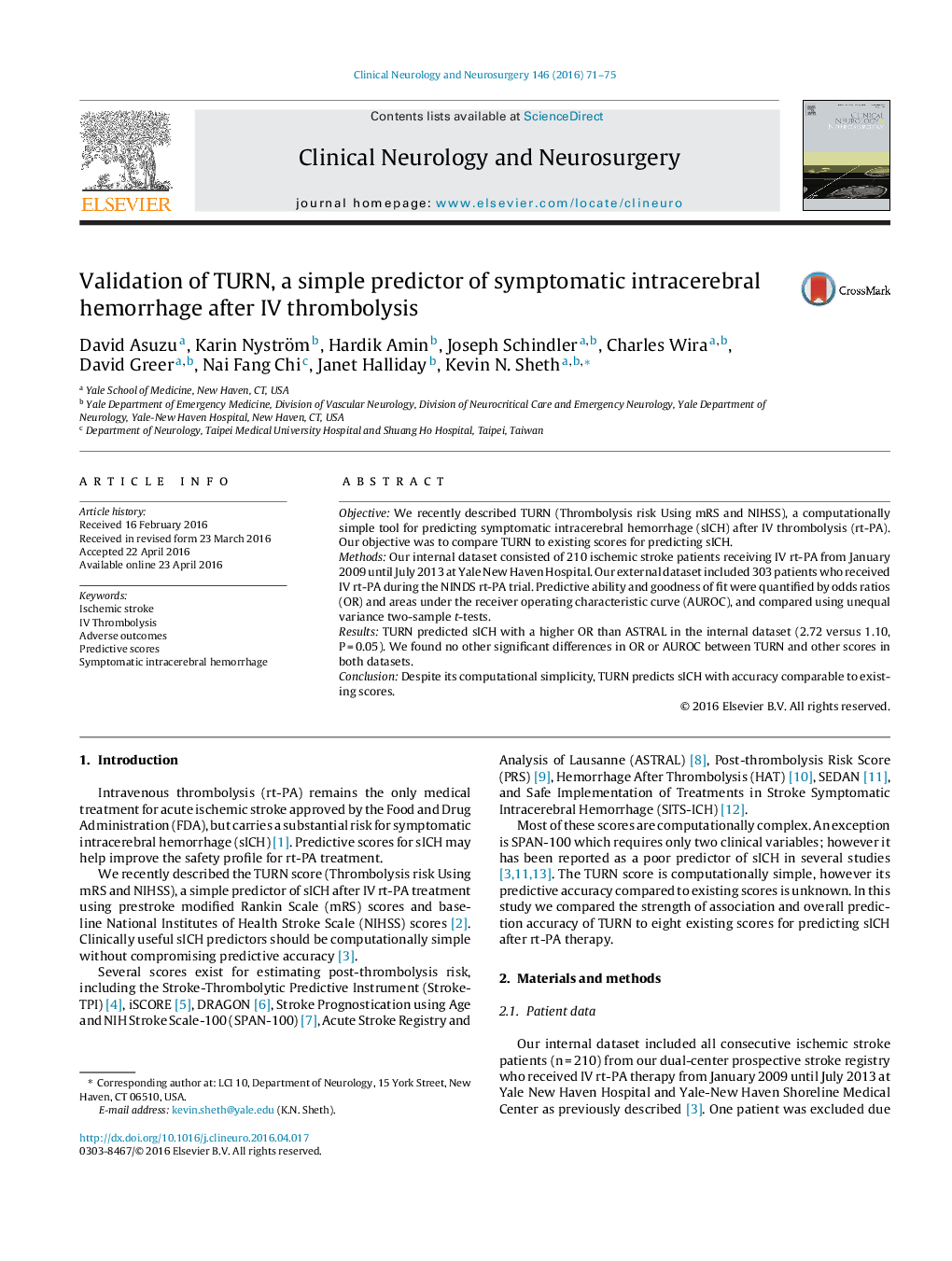| Article ID | Journal | Published Year | Pages | File Type |
|---|---|---|---|---|
| 3039611 | Clinical Neurology and Neurosurgery | 2016 | 5 Pages |
•Stroke remains a leading cause of severe disability and death in the US.•TURN score predicts sICH after IV thrombolysis for ischemic stroke.•TURN is computationally simple compared to existing scores.•TURN predicts sICH well compared to existing scores.•We derived a clinically meaningful cutoff for sICH prediction.
ObjectiveWe recently described TURN (Thrombolysis risk Using mRS and NIHSS), a computationally simple tool for predicting symptomatic intracerebral hemorrhage (sICH) after IV thrombolysis (rt-PA). Our objective was to compare TURN to existing scores for predicting sICH.MethodsOur internal dataset consisted of 210 ischemic stroke patients receiving IV rt-PA from January 2009 until July 2013 at Yale New Haven Hospital. Our external dataset included 303 patients who received IV rt-PA during the NINDS rt-PA trial. Predictive ability and goodness of fit were quantified by odds ratios (OR) and areas under the receiver operating characteristic curve (AUROC), and compared using unequal variance two-sample t-tests.ResultsTURN predicted sICH with a higher OR than ASTRAL in the internal dataset (2.72 versus 1.10, P = 0.05). We found no other significant differences in OR or AUROC between TURN and other scores in both datasets.ConclusionDespite its computational simplicity, TURN predicts sICH with accuracy comparable to existing scores.
